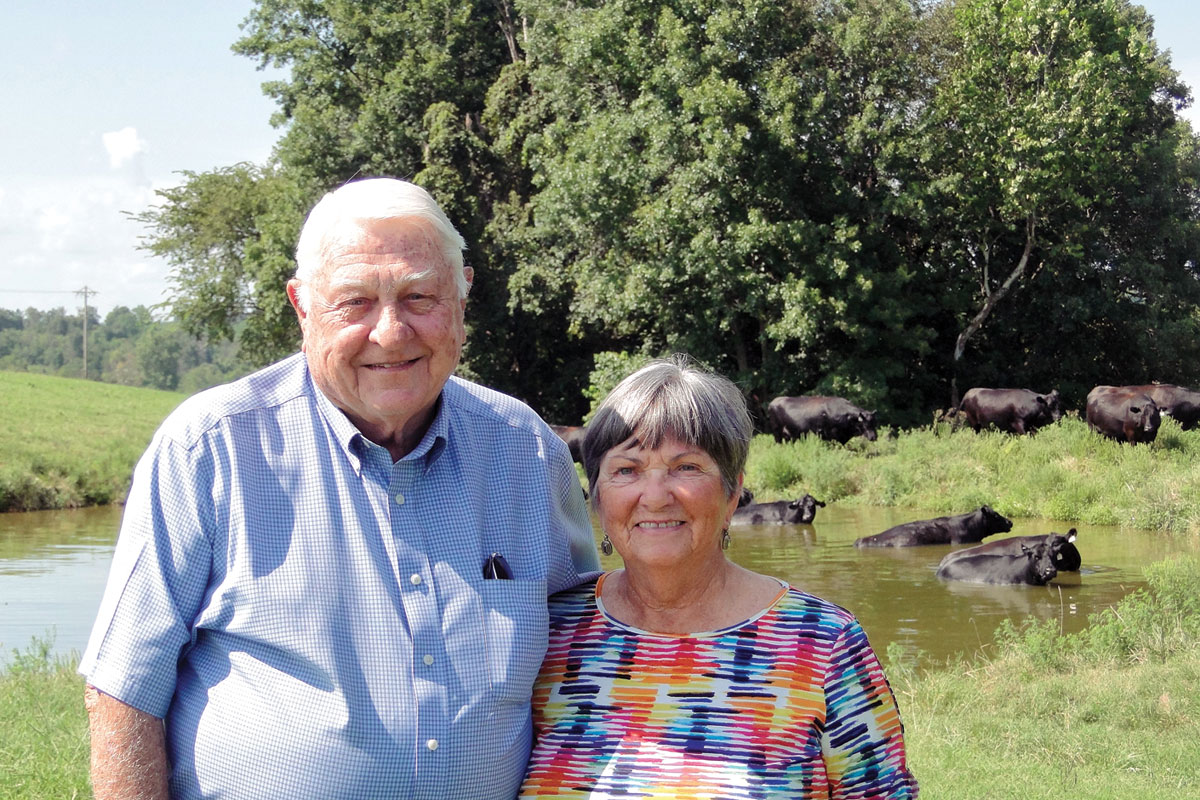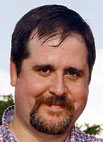
Leo and Nancy Anderson are firm believers in following programs laid out by the Angus Association
Leo and Nancy Anderson raise commercial and registered Angus on 1,000 contiguous acres in rural Hindsville, Ark., with a herd totaling between 600 and 700 at any given time.
As a boy, Leo was raised on 300 of the current 1,000 acres with the homestead being started by his grandfather, C.W. Bone, and later taken over and by his father and mother, Leo and Fern Bone-Anderson.
“Everybody farms differently, and my practices are much different than my father’s, partially through trial and error in discovering what works best for us and partially because times have changed,” Leo said.
Leo remembers his father sheltering cattle in a barn during winter nights. The cattle got so steamy and hot they seemed to get sick more often. Consequently, Leo keeps his cattle unconfined with some open shelters available in addition to little valleys and groves of trees that provide sufficient protection and seem to promote health. Leo’s father also kept 100 goats whose browsing helped control more persistent issues like cockle burrs, thistles and brush while Leo, like most farmers today, fertilizes, sprays for weeds and brush hogs.
“I like to use chicken litter when it’s available on a rotating basis, even though it brings in cockle burr and other weed seeds. The grass grows well and I rarely need to over seed,” Leo said.
Building the large farm may have taken dedication and time, but the couple clearly loves what they do. They have one full-time employee, Robby Burks, who lives with his family in the original family homestead.
Farm responsibilities are informal but well defined. Leo is the general manager and focuses heavily on land, especially since he “retired” from their lumber businesses with Pine Creek Lumber in Hindsville and Anderson Lumber in Siloam Springs, Ark., still family businesses. The land is well watered by ponds and springs.
Robby spends much of his time in fence repair, equipment service and cattle delivery, as well as doing most of the feeding and tagging. Nancy and her close friend Loretta Lewis, affectionately labeled “two old dames” by Leo, administer shots and freeze brand, with Nancy also doing the bookwork and helping rake hay.
Leo is a staunch supporter of the Angus Association.
“They work hard at improving the breed and adjusting EPD data,” Leo said.
In recent years the Angus Association identified four genetic defects caused by recessive mutations of a single cattle chromosome.
The first defect is calf malformation characterized by crooked or twisted legs with joints often fixed in position and with the calves born dead or dying shortly after birth. The second typically results in calves born near term with the birth weight of approximately 30 pounds and volleyball to basketball sized heads. These calves have no recognizable brain or spinal canal tissue. The third defect is commonly called double muscling with calves having little covering fat and thin bones. The final issue is identified by calves with an abnormal, crouched posture similar to that of an elk or deer fawn and also with a taller and more slender frame than their unaffected siblings.
In order to resolve the issues, the Angus Association required registered breeders to perform a DNA test of all breeding females. The Andersons complied through a blood sample taken from the ears of their cattle. Any female with any of the recessive genes can no longer be used for registered breeding, which will eliminate these issues because both the sire and the female must have the gene for the problem to occur with a 25 percent chance of having a dead or affected calf, a 50 percent chance of having a normal appearing calf that carries the mutation and a 25 percent chance of having a normal appearing, non-mutation carrying calf.
“The Angus Association is progressive and holds itself to the highest possible standards,” Leo said. “This is simply one indication of their mission to produce the best breed of cattle.”
The second association practice is to analyze registration papers and adjust EPD numbers according. The result is that buyers, whether buying semen or breeding animals, have the latest EPD data available based upon actual calf statistics rather than original parent statistics.
The Anderson’s run 250 registered and commercial Angus mommas bred naturally by 10 registered herd bulls. They have spring and fall calving for the commercial herd in order to have a better chance at hitting higher markets as well as spring and fall calving for the registered herd in order to allow more maturation time before breeding. The Andersons prefer looking through Angus Association publications and studying the published EPDs for calving ease, milkability and yearling weight knowing EPD updates provide accuracy
The Andersons sell pelvic measured bred heifers and 18 to 24 month fully evaluated bulls through private treaty sales. Most buyers are repeat customers with 90 percent of their sales going to commercial breeders.
“Customers return because they have liked our cattle before and appreciate that our terrain is similar to theirs,” Leo explained.






